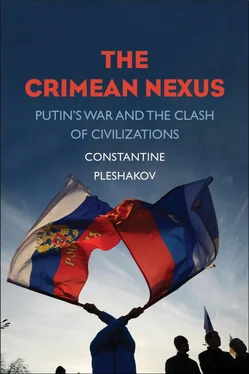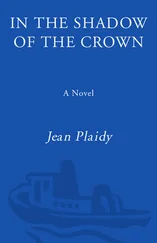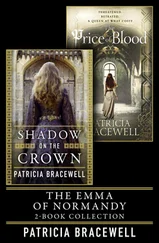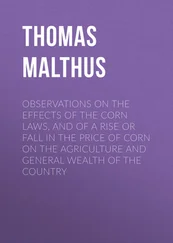In the sixteenth century, most of Ukraine fell under Polish rule. Its upper class adopted the language and culture of the conqueror (the process known as Polonization), causing a critical alienation between the elites and the lower classes. When Bohdan Khmelnytsky led Ukrainian peasants in a revolt against the Poles in 1648, he was also fighting his own country’s aristocracy. Though a hero to Ukrainians, Khmelnytsky became infamous among Jews for the exceptional brutality of the Cossack pogroms under his rule.
Seeing the impossibility of domestic consensus, Khmelnytsky realized that he needed a powerful foreign patron and that his options were limited to just Russia and the Crimean Khanate, an offshoot of the Mongol empire, and by this time a protectorate of the Ottomans.
Russia was Poland’s nemesis. Russians were Eastern Orthodox, like the majority of Ukrainians. There was little doubt, though, that eventually the Kremlin would want total control over Ukraine. But no lasting alliance with the only alternative patron, the Crimean Khanate, was possible, as Khmelnytsky had a chance to see for himself after visiting its capital, Bakhchisaray: there was nothing in it for the khan. Choosing what looked a lesser evil, in 1654 Khmelnytsky pledged allegiance to the Russian tsar. [6] Samoil Velichko, Letopis’ sobytii v yugo-zapadnoi Rossii v XVII-m veke (Kiev: Vremennaya komissiya dlya razbora drevnikh aktov, 1848), 44–45; Subtelny, Ukraine , 105, 133.
For nearly four hundred years since then, Russians have celebrated the 1654 pledge as a “reunification” of the “two Slavic peoples.” That was not how Khmelnytsky intended it, but with his death his nation-building project fell apart. The succession crisis led to a fratricidal war commanded by regional warlords, who were, in turn, manipulated by foreigners: Russians, Poles, Ottomans, Tatars, and Swedes. In Ukraine, the period is still remembered till this day as the Ruin ( Ruina ).
By the time of Khmelnytsky’s death, with opportunism as their modus operandi, the upper classes of eastern and central Ukraine sided with Russia. Polonization was replaced by Russification, which lasted as long as the aristocracy did. The greatest Ukrainian man of letters, the nineteenth-century satirist Nikolai Gogol, wrote in Russian. [7] Y. V. Mann, “Skvoz’ vidnyi miru smekh…”: Zhizn N. V. Gogolya, 1809–1835 gg . (Moscow: MIROS, 1994), 23–26; Subtelny, Ukraine , 231.
In the eighteenth century, Russia’s war against the Ottoman Empire and its client state, the Crimean Khanate, did not seem to directly concern Ukraine. The Turkic-speaking khanate, which at that time encompassed not just the Crimean peninsula but the Wild Fields and the entire region surrounding the Sea of Azov, was next door but not part of the Ukrainian narrative. This changed when Russia took over the khanate, christened the region “Novorossiya,” or New Russia, and began to rule it straight from the imperial capital as frontier provinces. Trade hubs and industrial centers along the coasts, from Odessa to Taganrog, were multinational. So was the new farming class. [8] Paul Bushkovitch, A Concise History of Russia (New York: Cambridge University Press, 2012), 122.
In the official vernacular of the empire, Ukraine became “Malorossia”—“Little Russia” (Belorussia, now Belarus, was “White Russia,” and the imperial Russian core “Velikorossia,” or “Greater Russia”). The basic administrative imperial unit was the province ( guberniya ); no entity called Ukraine appeared on any map. The idea of Ukrainian nationhood would not appear until the mid–nineteenth century. [9] Subtelny, Ukraine , 231.
This idea was conceived in Ukraine’s western regions, collectively known as Galicia and belonging to Austria-Hungary. While hardly a paragon of free thinking, the Habsburg Empire was nevertheless more liberal than the Romanov dynasty in Russia. In the words of the historian Orest Subtelny, Galicia became the “bastion of Ukrainianism.” [10] Ibid., 307.
Many believe it still is.
The task of defining, or, to use Benedict Anderson’s term, “imagining,” Ukraine was similar to that facing a number of Eastern European peoples, all of whom were influenced by the new German concept of nationhood—common language and shared heroic mythology. A founding father of nationalism in Ukraine, Mykhailo Hrushevsky (1866–1934), dismissed the political and cultural fragmentation of the previous six centuries as inconsequential, claiming that since the breakup of the Kievan state Ukrainians had still continued as a single ethnos, or nation. Looking for a historical myth that would separate Ukrainians from Russians, nationalists zoomed in on Cossacks, denizens of an autonomous rogue republic, Bohdan Khmelnytsky one of them. This mythology, however, held little appeal for the Russian and Jewish artisans and bourgeoisie who made up the majorities in Ukrainian cities, and who saw little benefit in participating in a new imagined community, particularly since the myth of “Cossackdom” was intensely xenophobic. The national poet of Ukraine, Taras Shevchenko (1814–1861), who wrote Cossacks into the literary canon, defined them by their struggles against “Polaks” ( lyahi ), “Ivans” ( moskaly ), “kikes” ( zhidy ), and Tatar “infidels” ( pohantsy ). [11] Benedict Anderson, Imagined Communities: Reflections on the Origin and Spread of Nationalism (London: Verso, 2006), 4; Serhiy Bilenky, Romantic Nationalism in Eastern Europe: Russian, Polish, and Ukrainian Political Imaginations (Stanford, Calif.: Stanford University Press, 2012), 7; Bushkovitch, Concise History of Russia , 326; Serhii Plokhy, The Cossack Myth: History and Nationhood in the Age of Empires (Cambridge: Cambridge University Press, 2012), 5; Taras Shevchenko, “Katerina,” “Tarasova noch,” (“Taras’s Night”), “Ivan Pidkova” in Kobzar (Kyiv: Dnipro, 1985), 29, 44, 61–62; Mykhailo Hrushevsky, History of Ukraine-Rus’ (Edmonton: Canadian Institute of Ukrainian Studies Press, 1997–2014).
Ukraine had no clear boundaries, either in reality or in collective memory. Mental maps of the country differed widely depending on who was thinking them up, and when, and where. Crimea was not part of any “mental map.” Nationalist lore remembered it as an infidel horde that raided Ukraine in search of slaves and loot; liberal intelligentsia such as the outstanding poet Larysa Kosach-Kvitka (1871–1913), known by her nom de plume Lesya Ukrainka, empathized with Tatars as victims of Russian imperialism, on par with Ukrainians themselves. [12] Letopis’ samovidtsa (Kiev: Kievskaya vremennaya kommissiya dlya razbora drevnikh aktov, 1878), 95; Lesya Ukrainka, “Negoda” (“Storm”) in Na krylakh pisen (Lviv, 1893), 58–59. For detailed discussion of “mental maps” of Ukraine, see Bilenky, Romantic Nationalism in Eastern Europe , 71–100.
For Ukraine, only a catalyst of extraordinary proportions could have made a national movement possible. It arrived in the form of the two Russian revolutions of 1917. The revolution of February swept away the Romanov monarchy, and the revolution of October took care of pretty much everything else, leaving no value in the country standing and hardly any structures. The civil war, apocalyptic in brutality, continued for three years. Finland, Estonia, Latvia, and Lithuania used the chaos to secede: each was a compact territory where the educated class upheld a national myth. Ukraine, still fragmented, tried and failed.
Having no structure, power base, or resources, the succession of three nationalist regimes in Kiev between November 1917 and December 1919 (the Central Rada, the Hetmanate, and the Directory) exercised suzerainty only over Kiev. Throughout 1918, Ukraine was occupied by Germany, a condition incompatible with any but titular independence. After signing the armistice in the west in November 1918, the Germans evacuated, and the only force holding Ukraine together departed with them. Total collapse and lawlessness followed. No government could claim continuous authority. In two years, Kiev changed hands eighteen times. [13] Subtelny, Ukraine , 359; Mikhail Bulgakov, The White Guard (New Haven: Yale University Press, 2008); J. A. E. Curtis, Manuscripts Don’t Burn: Mikhail Bulgakov, a Life in Letters and Diaries (Woodstock, N.Y.: Overlook, 1992), 6.
Читать дальше












